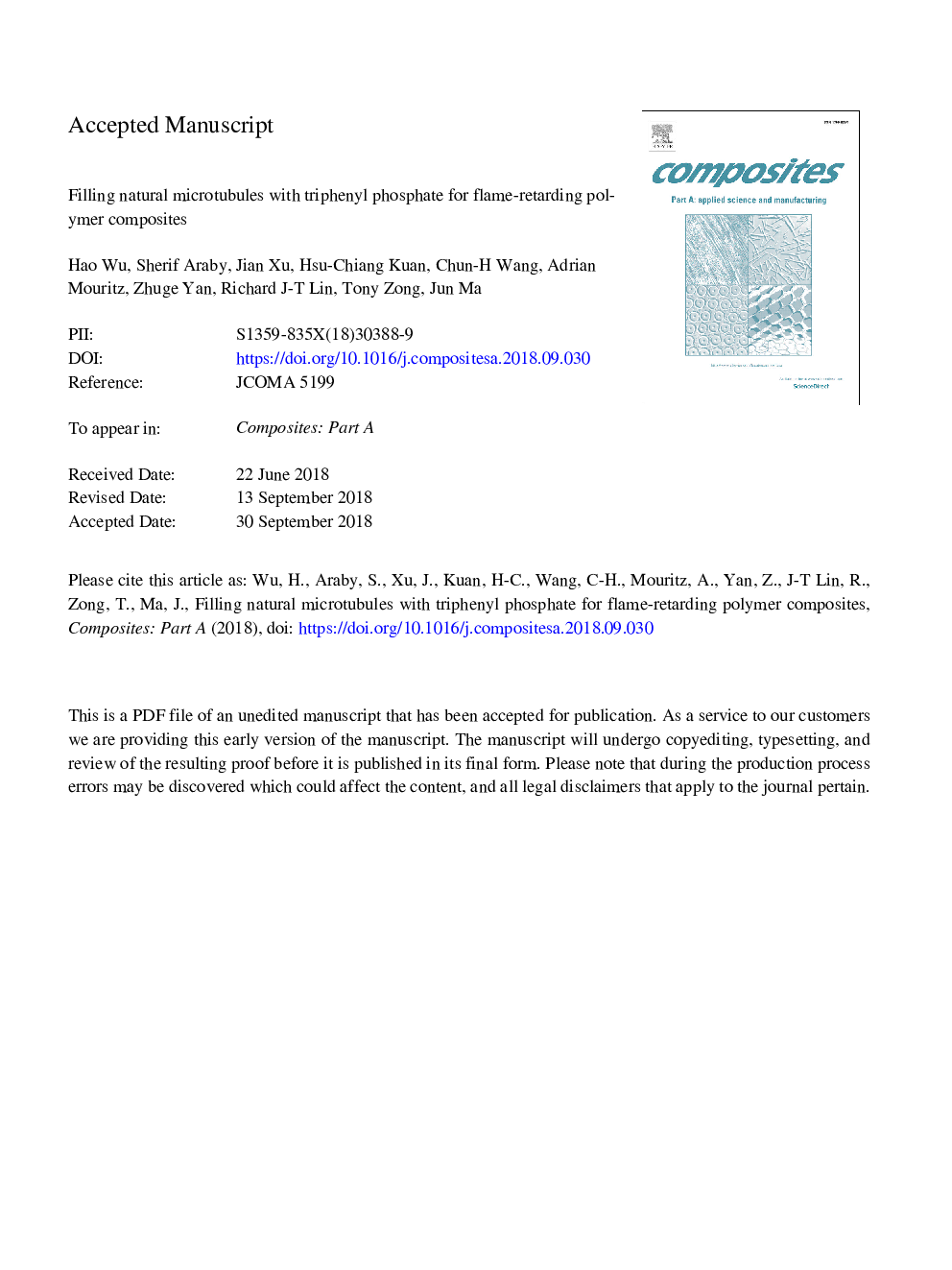| Article ID | Journal | Published Year | Pages | File Type |
|---|---|---|---|---|
| 11026789 | Composites Part A: Applied Science and Manufacturing | 2018 | 24 Pages |
Abstract
Phosphorus flame retardants can provide polymers with flame retardancy, but they often compromise the polymers' mechanical performance due to plasticization. This problem is addressed in this study by filling and sealing triphenyl phosphate into natural microtubules of â¼100â¯Âµm in length, 10-20â¯Âµm in diameter and 0.5-1.0â¯Âµm in wall thickness. We investigated the sealing mechanisms through morphological observation and X-ray photoelectron spectroscopy. An appropriate mixture of triphenyl phosphate and cellulose acetate at mass ratio of 97:3 created an encapsulation effect which prevented triphenyl phosphate from flowing out of the tubules during curing, which resulted in an encapsulation ratio of 56%. Adding the filled tubules into an epoxy resin showed no obvious compromise on the stiffness and strength of the matrix. The tubules proved effective in increasing char and reducing smoke release during combustion. This self-sealing method may be used in other applications such as self-healing composites.
Related Topics
Physical Sciences and Engineering
Materials Science
Ceramics and Composites
Authors
Hao Wu, Sherif Araby, Jian Xu, Hsu-Chiang Kuan, Chun-Hui Wang, Adrian Mouritz, Yan Zhuge, Richard J.-T. Lin, Tony Zong, Jun Ma,
